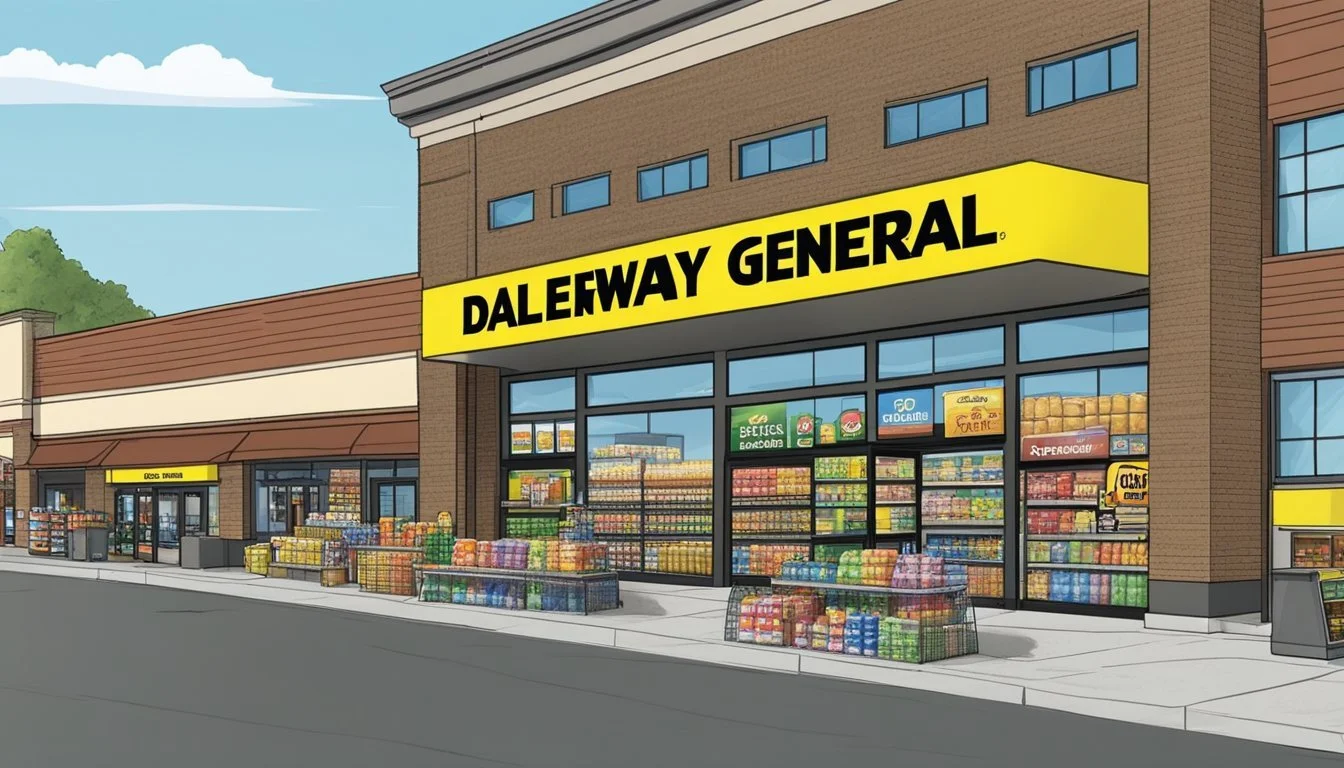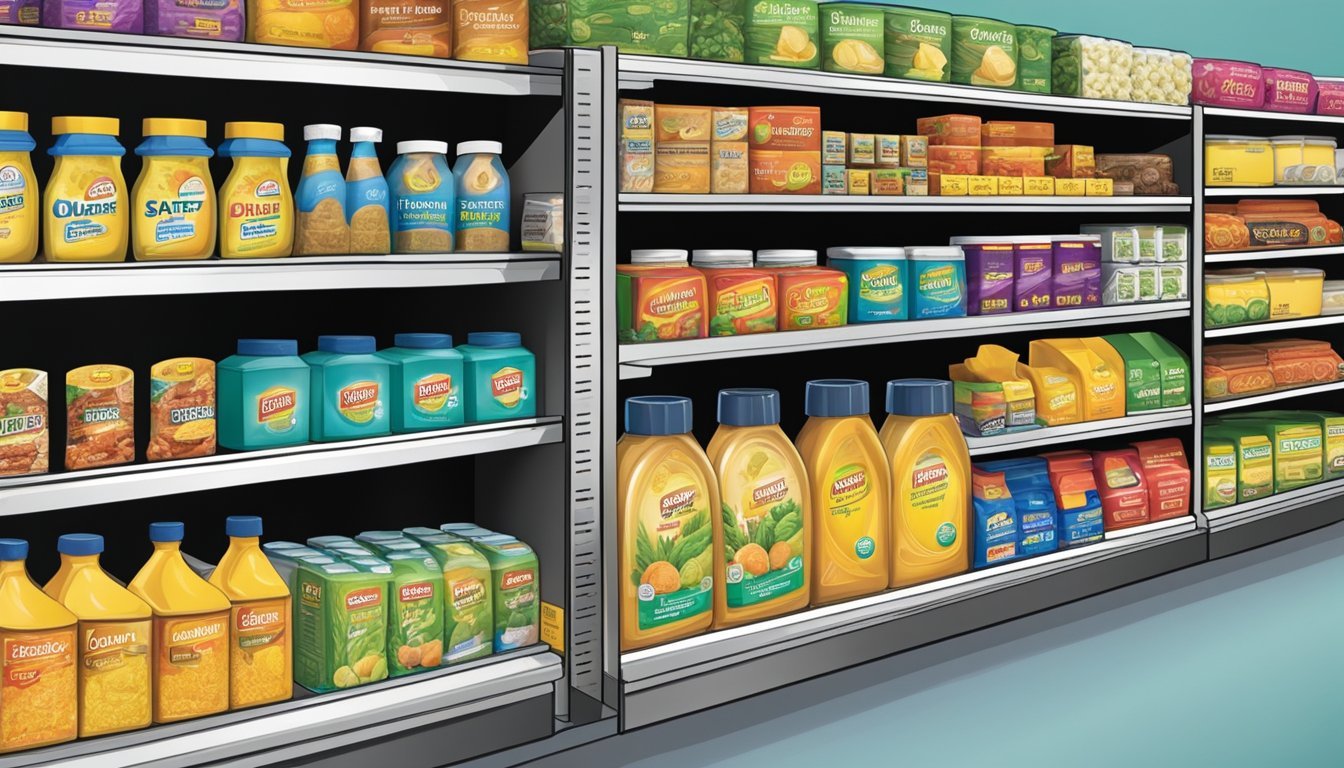Dollar General vs Safeway
A Comprehensive Comparison of Price, Quality, and Selection
Grocery shopping choices can significantly impact household budgets. Dollar General and Safeway represent two different approaches to retail grocery - the discount dollar store model versus the traditional supermarket chain. Both aim to provide value, but in distinct ways.
Dollar General offers lower prices on a more limited selection of items, while Safeway provides a wider range of products and services at generally higher price points. This fundamental difference shapes the shopping experience at each store. Dollar General focuses on no-frills convenience and affordability, whereas Safeway emphasizes variety and quality.
The best choice between Dollar General and Safeway depends on individual needs and preferences. Shoppers seeking rock-bottom prices on basics may prefer Dollar General. Those who prioritize selection, fresh produce, and specialty items might find Safeway a better fit. Comparing specific product prices and considering factors like store location and shopping frequency can help determine which offers more value for a particular household.
Overview of Dollar General and Safeway
Dollar General and Safeway represent two distinct approaches to grocery retail in the United States. These chains cater to different market segments and employ unique strategies to serve their customers.
History and Business Model
Dollar General opened its first store in 1955 in Kentucky, focusing on offering products at $1 or less. Over time, it evolved into a discount retailer selling items at various price points. The company targets rural and suburban areas, providing a mix of grocery, household essentials, and seasonal merchandise.
Safeway's roots trace back to 1915 in Idaho. It grew into a major supermarket chain, offering a full range of groceries, fresh produce, meats, and bakery items. Safeway aims to provide a more comprehensive shopping experience with larger stores and a wider product selection compared to Dollar General.
Store Presence and Distribution
Dollar General boasts over 18,000 stores across 47 states, primarily in rural and suburban locations. Its smaller store format allows for quick expansion and serves communities with limited retail options. The chain's distribution centers support its vast network of stores efficiently.
Safeway operates approximately 900 stores, mainly concentrated in the western and central United States. Its stores are typically larger than Dollar General's, offering more space for fresh departments and a broader product range. Safeway's distribution system includes regional warehouses to supply its supermarkets with fresh and packaged goods.
Assessing Product Range and Quality
Dollar General and Safeway offer distinct product selections and quality levels to cater to different customer needs. Their offerings vary significantly in fresh produce, packaged goods, and specialty items.
Fresh Produce and Organic Options
Dollar General's produce section is limited, focusing on basic fruits and vegetables. The chain typically stocks a small selection of apples, bananas, potatoes, and onions. Organic options are scarce or nonexistent in most Dollar General stores.
Safeway, in contrast, provides a wide array of fresh produce. Their stores feature extensive selections of fruits, vegetables, and herbs. Safeway also offers a robust organic produce section, including leafy greens, berries, and tropical fruits. The quality of Safeway's produce is generally higher, with fresher items and more frequent restocking.
Packaged Foods and Generic Staples
Dollar General excels in offering affordable packaged foods and generic staples. Their shelves are stocked with a variety of canned goods, cereals, and snacks at competitive prices. The chain's private label, Clover Valley, provides budget-friendly alternatives to name-brand products.
Safeway's packaged food selection is more diverse. They carry a wide range of national brands alongside their own Signature Select line. Safeway's generic options often match or exceed the quality of name-brand counterparts. The chain also offers more health-conscious and specialty diet options in their packaged foods section.
Specialty Foods and International Selection
Dollar General's specialty and international food offerings are minimal. The chain focuses on mainstream American products with limited variety in ethnic or gourmet items.
Safeway provides a more extensive selection of specialty and international foods. Their stores often feature dedicated sections for Asian, Hispanic, and European cuisines. Safeway also carries a range of gourmet cheeses, artisanal breads, and specialty condiments. This wider selection caters to diverse tastes and dietary preferences.
Price Comparison and Savings
Dollar General and Safeway employ different pricing strategies to attract customers. Both stores offer opportunities for savings, but their approaches vary significantly in terms of regular pricing, discounts, and loyalty programs.
Evaluating Regular Prices Across Stores
Dollar General typically maintains lower regular prices on many everyday items compared to Safeway. A basket of common groceries at Dollar General often costs 10-15% less than at Safeway. For example, a gallon of milk might be priced at $3.50 at Dollar General versus $4.25 at Safeway.
However, Safeway tends to have a wider selection of products, including more premium and organic options. These items may carry higher price tags but offer different value propositions for certain shoppers.
Discounts, Sales, and Loss Leaders
Both stores use sales and loss leaders to draw customers, but their tactics differ. Dollar General focuses on consistent low prices with fewer dramatic markdowns. They often have a "$1 aisle" with rotating bargains.
Safeway, in contrast, runs frequent promotions and deep discounts on select items. Their weekly circular may feature items at 30-50% off regular prices. Safeway also uses "loss leaders" more aggressively, selling some popular items below cost to attract shoppers.
Loyalty Programs and Member Discounts
Safeway's loyalty program offers more extensive benefits compared to Dollar General. Safeway's "Just for U" program provides personalized deals, digital coupons, and points that can be redeemed for discounts on gas or groceries.
Dollar General's program is simpler, offering a flat $1 off purchases of $5 or more on Saturdays. They also provide digital coupons through their app, but the selection is typically more limited than Safeway's offerings.
Safeway members may save an additional 10-20% on many items throughout the store with their loyalty card. Dollar General doesn't offer comparable member-exclusive pricing on a wide scale.
Shopping Experience and Convenience
Dollar General and Safeway offer distinct shopping experiences tailored to different customer needs. Their approaches to store layout, checkout efficiency, online options, and customer service vary significantly.
Store Layout and Checkout Efficiency
Dollar General stores typically have a compact layout with narrow aisles. Products are often displayed in boxes or on simple shelving units. This setup allows for quick browsing but can feel cramped during busy times.
Checkout at Dollar General is usually swift, with most locations having 2-4 registers. Self-checkout options are limited.
Safeway stores feature wider aisles and a more spacious layout. Departments are clearly marked, making it easier to navigate. The produce section is often prominently displayed near the entrance.
Safeway generally offers more checkout lanes, including self-checkout options. This can reduce wait times during peak hours.
Online Shopping and Grocery Delivery Options
Dollar General has expanded its digital presence with the DG GO! app. Customers can scan items while shopping in-store for a faster checkout experience. The company also offers limited delivery options through DoorDash in some areas.
Safeway provides a more robust online shopping experience. Customers can order groceries through the Safeway website or app for delivery or curbside pickup. The service includes a wide range of products and allows for easy reordering of previous purchases.
Customer Service and Support
Dollar General focuses on a no-frills approach to customer service. Staff members are typically available to answer questions, but specialized services are limited.
Safeway offers a more comprehensive customer service experience. Many locations have dedicated customer service desks for returns, refunds, and general inquiries. Specialty departments like the deli, bakery, and pharmacy provide additional support and product knowledge.
Safeway's loyalty program, Just for U, offers personalized deals and gas rewards. Dollar General's DG Digital Coupons provide savings but are less personalized.
Market Position and Competitor Analysis
Dollar General and Safeway occupy distinct positions in the retail landscape, each with unique strengths and challenges in the competitive grocery market.
Comparison with Other Retail Giants
Dollar General competes primarily in the discount retail space, rivaling chains like Family Dollar and Dollar Tree. Its focus on low prices and small-format stores sets it apart from traditional grocers. Walmart remains a key competitor, offering a wider product range and stronger e-commerce presence.
Safeway, part of Albertsons Companies, faces competition from larger supermarket chains like Kroger and regional players such as Giant and Food Lion. It also contends with specialty grocers like Sprouts Farmers Market and discount operators like Grocery Outlet.
Amazon's expansion into grocery through Whole Foods and online services has impacted both Dollar General and Safeway, forcing adaptations in digital offerings and delivery options.
Market Share and Revenue Insights
Dollar General's revenue reached $37.8 billion in fiscal 2022, reflecting steady growth and market penetration. Its extensive network of over 18,000 stores gives it a significant foothold in rural and suburban areas.
Safeway's exact revenue is not publicly disclosed as part of Albertsons, but the parent company reported $77.7 billion in fiscal 2022 sales. This includes multiple banners beyond Safeway.
Both face pressure from discounters like Aldi and value-focused regional chains such as WinCo and Market Basket, which have been gaining market share in recent years.
Customer Perceptions and Brand Ratings
Dollar General scores well on price perception but faces challenges in product quality and store experience ratings. Its no-frills approach appeals to budget-conscious shoppers but may deter those seeking a broader shopping experience.
Safeway generally receives higher marks for product quality and store atmosphere. It ranks moderately well in customer satisfaction surveys among traditional grocers.
Recent consumer studies indicate a growing preference for value-oriented shopping, benefiting Dollar General. However, Safeway's fuller grocery offerings and fresh departments remain attractive to many shoppers.
Both chains have work to do in improving their digital presence and loyalty programs to meet evolving customer expectations in an increasingly omnichannel retail environment.
Demographic and Regional Shopping Trends
Dollar General and Safeway cater to distinct customer segments across urban and rural areas. Their strategies reflect the varied needs and preferences of local consumers, from busy city dwellers to families in small towns.
Adaptation to Urban versus Rural Shopping Needs
Dollar General focuses on rural and suburban markets, often serving as the primary grocery option in areas with limited retail choices. The chain offers a mix of groceries, household items, and affordable essentials tailored to local preferences. In rural areas, Dollar General stores are typically smaller and more accessible than large supermarkets.
Safeway, conversely, targets urban and suburban shoppers with larger store formats and a wider product range. The chain emphasizes fresh produce, organic options, and prepared foods to meet the demands of city consumers. Safeway's urban locations often feature grab-and-go meals and expanded deli sections for busy professionals.
Case Studies: Regional Consumer Preferences
In Maryland, Safeway's presence in Baltimore caters to urban families seeking diverse grocery options. The stores offer ethnic foods and local specialties to reflect the city's multicultural population.
Minneapolis shoppers favor Safeway's upscale offerings and in-store dining options. The chain's stores in this market feature expanded organic sections and gourmet prepared meals.
Dollar General's expansion in rural Illinois addresses the needs of area consumers with limited access to full-service grocers. These stores stock essential groceries and household items at competitive prices.
Chicago's Dollar General locations adapt to urban constraints with smaller footprints and curated product selections. They focus on quick-trip items and affordable basics for budget-conscious city dwellers.
Final Comparisons and Recommendations
Dollar General and Safeway offer distinct shopping experiences with different strengths. Their pricing, product quality, and overall value vary significantly, catering to diverse consumer needs.
Overall Quality and Value
Dollar General excels in affordability for generic staples and household items. Its low prices appeal to budget-conscious shoppers. However, the store may have limited fresh produce options and undersized items.
Safeway provides higher overall quality, especially in fresh foods and organic selections. While generally more expensive, Safeway often offers better value for perishables. The store's loyalty program can lead to significant savings for regular customers.
Surveys indicate families spending $250 per week on groceries could save more at Dollar General. However, Safeway's superior produce and meat departments may justify higher costs for some shoppers.
Recommendations for Different Shopping Needs
For basic pantry items and household essentials, Dollar General is the cost-effective choice. Its amazon-like prices on non-perishables make it ideal for stocking up on canned goods, paper products, and cleaning supplies.
Safeway is recommended for those prioritizing fresh food quality and variety. Its wider selection of produce, meats, and specialty items caters to more diverse culinary needs. Health-conscious consumers may prefer Safeway's organic options.
Budget-savvy shoppers might consider a hybrid approach. Purchasing shelf-stable items at Dollar General and fresh foods at Safeway could optimize savings and quality. This strategy allows families to balance their food budget without compromising on nutritional value.






